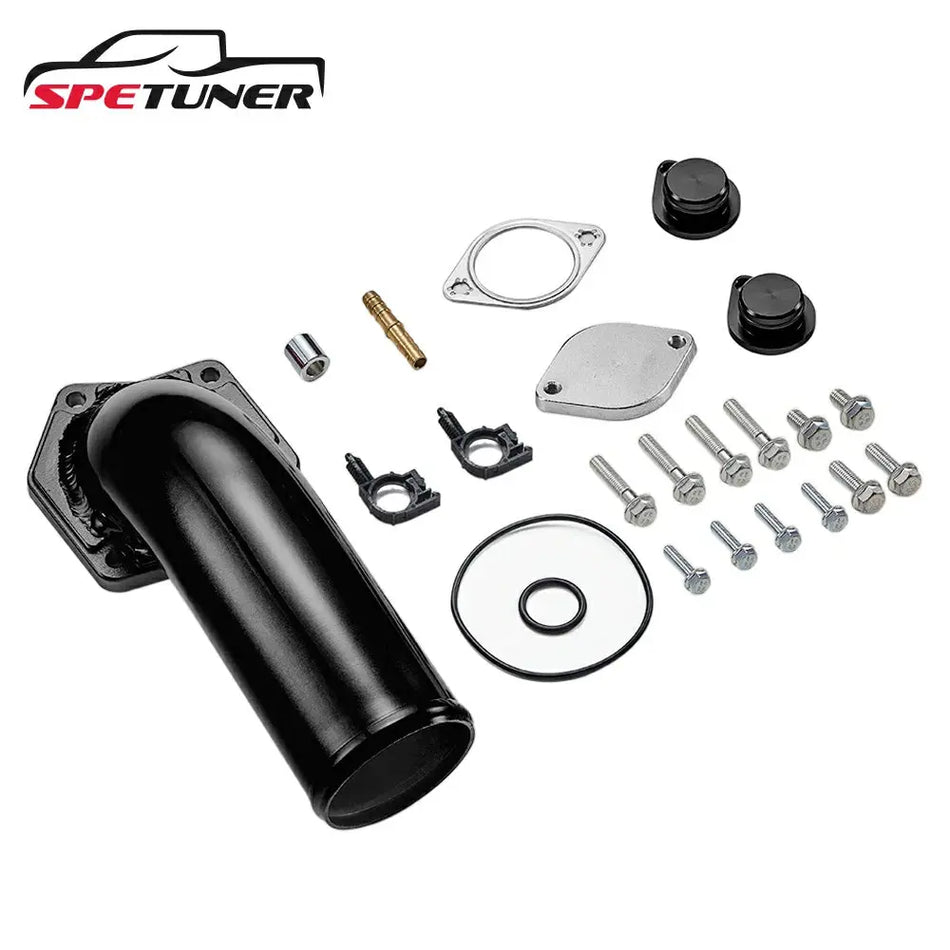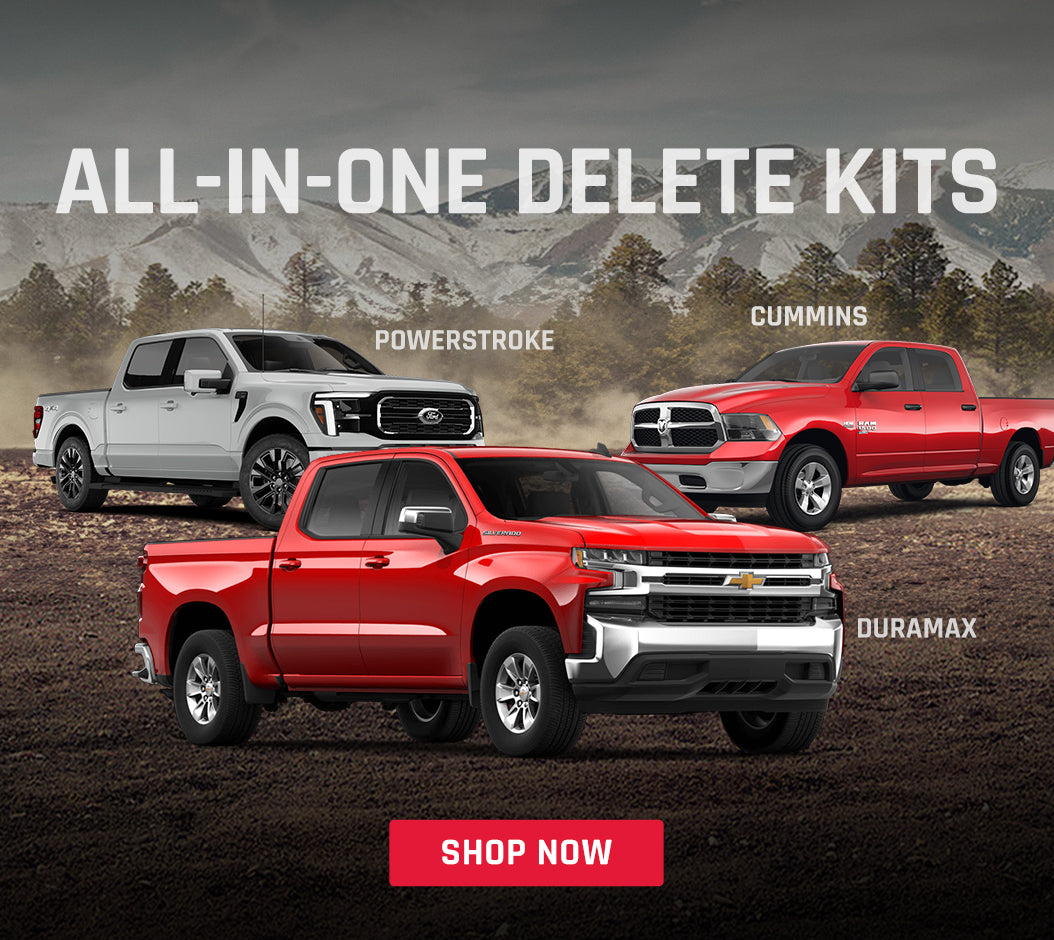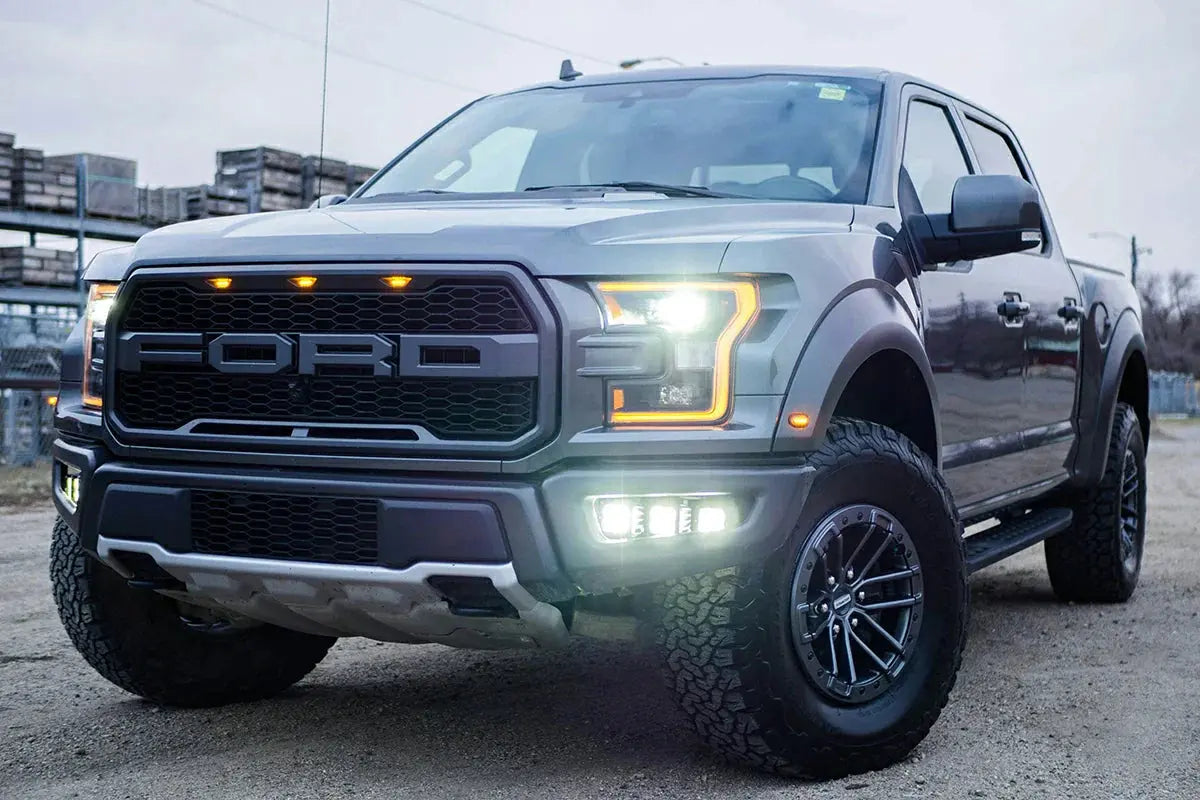Overview. This guide explains the Crankcase Ventilation (CCV) system on the 6.7 Powerstroke and compares Delete vs Reroute + Catch Can. We cover how the system works, real-world trade-offs, compliance & warranty considerations, model-year differences, and common mistakes to avoid. This is a technical explainer and selection guide—not instructions for illegal on‑road modifications.
What Is the CCV on a 6.7 Powerstroke? (How It Works / Common Symptoms / Model‑Year Differences)
How it works. Diesel engines produce blow‑by gases that carry oil mist into the crankcase. The CCV system separates that oil and routes cleaned vapors back to the intake to reduce deposits and emissions.
Common symptoms (when CCV performance degrades):
-
Oil film/sludge in intake tract and on sensors;
-
Odor or residue in the engine bay/underbody;
-
Elevated crankcase pressure under high load or in cold climates, which can encourage leaks;
-
Filter saturation/clogging when maintenance intervals are exceeded.
Model‑year notes (high level):
-
2011–2016: Earlier routing/separation layout; more sensitive to extended heavy‑duty use if maintenance is skipped.
-
2017+: Updated packaging and control logic for tighter oil‑mist management; more sensitive to seal quality and hose condition.
Further reading — Filter replacement & reroute install considerations:
https://spetuner.com/blogs/instruction/6-7-powerstroke-ccv-filter-replacement-and-reroute-installation

Pros & Cons of a CCV Delete (Performance, Deposits, Maintenance; Warranty/Compliance/Risk)
Potential upsides:
-
Cleaner intake with less oil mist recirculation and sensor fouling;
-
Simplified plumbing that’s easier to inspect and service;
-
More engine‑bay room for packaging other upgrades.
Trade‑offs & risks:
-
Compliance/inspection: Many jurisdictions restrict vent‑to‑atmosphere systems; on‑road use may be illegal.
-
Warranty impact: Modifying powertrain/emissions systems can trigger warranty disputes.
-
Odor/environment: Open venting can introduce hydrocarbon odor and environmental concerns.
-
Pressure control: Poorly executed changes can cause excess crankcase pressure, leading to leaks.
Bottom line: A delete is a track/special‑use strategy. Weigh compliance risk and use‑case carefully.
CCV Reroute / Catch Can Alternatives (When It’s Better / Side‑by‑Side Comparison)
Reroute optimizes flow without fully removing CCV function. Paired with a catch can for secondary separation, it aims to reduce intake oiling while maintaining controlled pressure and more practical day‑to‑day manners.
When to prioritize reroute:
-
Street‑driven trucks where compliance and odor control matter;
-
Goals focus on reducing deposits/sensor contamination rather than maximum track performance;
-
You prefer a reversible, maintainable path.
Comparison table
| Option | Vapor Handling | Pros | Risks / Compliance | Best For | Maintenance |
|---|---|---|---|---|---|
| Stock | Filtered, returned to intake | Fully compliant; no changes | Long‑term oiling possible | OEM state / warranty priority | Replace CCV filter per manual; check seals |
| Reroute + Catch Can | Redirected with secondary separation | Less intake oiling; deposit reduction; odor manageable | Must still observe local rules | Daily driving + mild performance | Drain catch can; inspect hoses/clamps |
| Delete (Track‑Use) | Open vent / no return | Simplest routing; easy visual checks | High compliance risk; odor/environment concerns | Track/off‑road only | Verify venting; watch for leaks and oil spray |
SPETUNER offers both Reroute + Catch Can and track‑use Delete kits. Materials (reinforced silicone, anodized fittings) and pressure‑friendly routing are detailed on product pages. Choose based on your use case.
SPETUNER CCV Delete Kits: Quality and Compatibility
SPETUNER offers high-quality CCV delete kits specifically designed for 6.7 Powerstroke engines. These kits are built with reinforced silicone hoses for durability, venturi-style designs for optimal pressure flow, and anodized components for extended longevity.
SPETUNER’s CCV delete kits are easy to install and come with everything you need to get the job done. Whether you're looking for performance gains or simply to maintain a cleaner engine, our kits ensure both reliability and efficiency. They are designed to integrate seamlessly with your truck's engine, making installation quick and hassle-free.

2011–2016 vs 2017+ (Design Changes / Maintenance Priorities / Common Issues)
Design changes (high level). Later model years tighten separation and packaging. That improves oil‑mist control but makes the system more sensitive to hose integrity, clamp quality, and one‑way logic.
Maintenance priorities:
-
Separator/filter module: Shorten intervals if towing, heavy hauling, or operating in dust.
-
Hoses & fittings: Inspect for aging, looseness, and seepage; add heat shielding and strain relief where needed.
-
Pressure management: Whether stock or modified, ensure crankcase pressure stays in spec—avoid kinks, pinch points, and blocked ports.
Common issues:
-
Intake fouling that slows sensor/throttle body response;
-
Leaks at gaskets/fittings/seals;
-
Condensation/icing behaviors in cold or high‑altitude conditions—inspect more frequently.
Common Mistakes & Risk Controls (Excess Pressure / Leaks / Sensor Contamination)
-
Myth 1: “Just cap a hose and you’re fine.” → Leads to over‑pressure and leaks/seal damage.
-
Myth 2: “All years use the same parts.” → Port sizes, routing, and mounts differ—match parts to your model year.
-
Myth 3: “Catch can = no maintenance.” → You must regularly drain the can and service internals.
-
Myth 4: “Delete always gains power/MPG.” → Outcomes depend on the entire intake/exhaust/tune setup—and come with compliance and odor costs.
Risk‑control checklist:
-
Use oil‑ and heat‑resistant hose with reliable clamps; route away from heat/rotation.
-
After changes, verify venting and check idle/load behavior; watch for abnormal misting and seepage.
-
Keep modifications reversible and documented for diagnosis and service.
Legal Considerations: Is it Legal to Perform a CCV Delete?
Before modifying your truck’s engine, always check your local emissions regulations. In some areas, CCV delete modifications may be illegal, as they can increase pollution by releasing oil vapors and other contaminants directly into the atmosphere.
It’s especially important to ensure that any modifications comply with both federal and state emissions laws. Be aware of the potential impact on vehicle inspections, as some regions require vehicles to meet specific emissions standards.
FAQ
Q: What is the CCV on a 6.7 Powerstroke?
A: It separates crankcase oil mist and manages vapor return to reduce deposits and emissions.
Q: Does a CCV delete improve power or MPG?
A: It can reduce oil‑mist recirculation and minor flow resistance, which may improve response, but power/MPG gains aren’t guaranteed and depend on the overall setup and vehicle condition.
Q: Will it affect my warranty?
A: Powertrain/emissions modifications can impact warranty. Confirm terms with your dealer before making changes.
Q: How do I choose between reroute and delete?
A: For street use, prioritize Reroute + Catch Can. Reserve Delete for track/off‑road and accept compliance/odor trade‑offs.
Q: Do I need a retune?
A: Most CCV plumbing changes don’t require a tune by themselves, but if combined with other hardware, evaluate calibration and compliance as a system.
Q: How should I maintain the setup after changes?
A: Inspect for leaks/clamp tension, clean affected sensors, and shorten service intervals for filters/catch can in harsh environments.
Related Resources & Next Steps
-
Install & maintenance guide:
https://spetuner.com/blogs/instruction/6-7-powerstroke-ccv-filter-replacement-and-reroute-installation -
Buying & fitment: Choose the correct Reroute + Catch Can or track‑use Delete kit by model year. If you’re unsure, contact SPETUNER support.
Disclaimer. This article is for technical education and competition/off‑road contexts only. It is not a recommendation to modify emissions systems for public‑road use. You are responsible for understanding and complying with regulations where you operate your vehicle.










